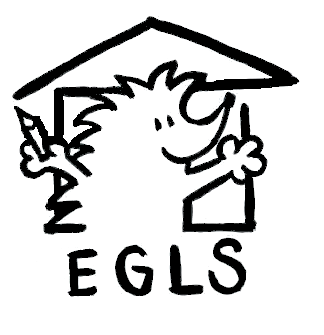Special Celebrations and Events
In addition to learning the verbal and written language, your experience at EGLS includes celebrating traditional German customs and holidays. These events give children the opportunity to learn and sing contemporary and traditional songs, get creative with costumes, recite poetry, hear German music, and continue to build their friendships outside of the classroom with students and parents alike.
The German culture is rich with historical celebrations. Originally, most of these celebrations were pagan rituals which tied directly to the changing of seasons and what they meant to the human condition. The celebration of spring and renewal, the celebration of hard work with a good harvest, the coming of longer nights and the appreciation of candlelight are all still celebrated today at our school. As Christianity spread, pagan rituals were replaced with Christian celebrations. Today, German-speaking countries still use the Christian names for events, regardless of peoples religious denomination.
To make our events more authentic, traditional German clothing is always encouraged, and parents are encouraged to sign up to bring traditional home baked goods to share with the school. Supermarket goods just do not do justice to the original confections of Europe!
The Eastside German Language School events include:
- St. Martinstag
- St. Nikolaustag
- Weihnachtsfeier
- Faschingsfest
- Maifest
St. Martinstag
History of St. Martinstag
St. Martin was a Roman soldier that later became a monk. He was known as a good, kind, quiet man. The people wanted St. Martin to become their Bishop, but he was reluctant, and on the day that he was to become a Bishop, he hid in a barn in the dark. The townspeople came looking for him with lanterns, and some noisy geese gave away his hiding place. Perhaps this is why goose is a traditional meal on St. Martinstag!
St. Martinstag is celebrated on November 11th in Europe in areas such as Flanders, the Netherlands, and most of Germany and Austria. Children make lanterns and form a procession through the streets, often receiving goodies for their efforts. After the procession they have a bonfire.
The Celebration at EGLS
Children create lanterns in their classrooms in the weeks leading up to St. Martinstag. They also learn a few of the traditional St. Martin songs. On the day of the event, they have a half day of school, then come downstairs, light their lanterns, and form a procession, either outside or inside. A bonfire, either real of fake, is supplied for the event. The children walk in the procession, singing the songs of appreciation of light in darkness, and are rewarded with cake, cookies, and other traditional St. Martin treats. Adults and family members are encouraged to come to this event, and are rewarded with coffee and tea!
St. Nikolaustag
History of St. Nikolaustag
St. Nicholas was a bishop who lived in the 4th century in what is now Turkey. He was known to be a kind protector of children, supplying poor and needy children with donated food when he could, and bestowing modest gifts on them anonymously. In the Middle Ages, St. Nicholas’s stood in judgment over children, tracking their good and bad deeds in a big book, and visiting them on December 6th to test their religious aptitude and make sure they were saying their prayers. A beastly companion was created called the Krumpus (also known as Black Peter, Knecht Ruprecht, and other names) who carried a big bag over his shoulder and used it to carry naughty children away. This tradition has not caught on well in America!
Today, children in German-speaking countries leave their newly cleaned shoes by the front door in the hopes of getting some goodies (and not coals or a switch!). If St. Nicholas pays them a visit, children are on their best behavior and have a poem or song ready to present to him. St. Nikolaustag is celebrated each year on December 6th.
Our Celebration at EGLS
To prepare for St. Nicholastag, children learn a traditional song or poem about Winter as a class. Then, on the weekend closest to December 6th, children take off their shoes before entering the classroom and leave them outside the door. A kindly St. Nicholas visits each classroom, where the children present him with their song or poem. They are rewarded with a shoe full of traditional goodies, such as an orange, some nuts, and a chocolate.
Weihnachtsfeier
History of the Weihnachtsfeier
In German-speaking countries, the Christmas season is an introspective time spent with family members playing cards or baking, visiting with extended family and friends, and listening to the beautiful music associated with the Winter season. It is not a time for consumption or frenzy!
The season starts with the first Advent, which begins four Sundays before Christmas and is celebrated with Stollen and Plaetzchen (traditional cookies), Advent wreaths, and Advent Calendars. The community comes together in the village square to enjoy Gluehwein, traditional winter food, and browsing at the Weihnachtsmarkt (the marketplace).
Christmas eve is celebrated with a formal evening meal. Afterwards, families sing carols and exchange gifts. The Christmas tree is usually put up and decorated on Christmas Eve. The Weihnachtsmann (Santa Claus), or the Kristkindl (Christ child) – depending on regional preference -brings a few gifts to children on Christmas eve. Some people attend a mass or church service, even if they are not religious. Christmas Day is enjoyed with another big meal, usually goose.
Our Celebration at EGLS
Children begin learning songs and creating costumes several weeks before the Weihnachtsfeier. The EGLS choir, which includes all students and teachers, sing together. Afterwards, some individual classes sing songs, play musical instruments, and entertain the audience with puppet shows and skits. Delicious home made cookies and cakes are served, along with hot cider and coffee for adults.
After food and performances, there is typically an auction or fundraiser. Baskets are made by various classes, and sometimes ornaments are for sale that were made by students. Sometimes raffle tickets are sold, and there are often many happy winners.
Faschingsfest
History of Faschingsfest
Fasching starts on November 11th, at 11:11 in the morning. Its historical purpose is to drive out the evil spirits of Winter to make way for the coming of Spring. Costumes are a big part of celebrating Fasching. Costumes and masks are a typically worn at Fasching parties for two reasons; first, ugly costumes, such as witches or goblins, are worn to scare away evil spirits, and second, costumes are a great way to hide social standing, and an opportunity to get away with all kinds of mischief! The Christian church celebrates Fasching as a time to be merry before the very serious time of Lent, which begins 42 days before Easter.
How we celebrate at EGLS
Children meet in their classroom to make final adjustments to their costumes, then line up to make a grand entrance into a party zone, complete with dance music, games, and lots of activities! The songs that are sung and the music that is played are typical of celebrations across German-speaking countries. The games are also typical of Fasching, and include eating food tied to strings, eating food with hands behind your back, having other people feed you food that are behind you and can’t see where they are aiming… okay, there is a lot of messy food consumed at this event! The children join hands in a circle and people with common costumes go in, turn around, take a bow, and enjoy the fun.
Maifest
History of Maifest
Winter is over, gardens and fields begin to bloom, and the earth awakens in “Wonnemond”, the month of love. Many weddings take place in Germany in May, and in the old days, Maifest was a time for unmarried men to get the unmarried women into the spirit of love through dancing, drinking, and parties.
Today, most Maifest celebrations include a Maibaum (May Tree), a cut tree that was historically placed in front of a brides house and decorated with colorful streamers and ribbons.
In the 1880’s, the first of May became Labor Day, and was used as a time for trade unions to give speeches and have marches. But that soon turned into a time for people to celebrate not being at work for the day!
In Bavaria, contests are held to see who can climb a greasy, tall Maypole to impress the village girls. Pretzels and sausages are the prize at the top of the Maypole.
Primarily, Maifest continues to be a celebration of renewal, love, and an excuse to hold hands, sing, and dance with family, neighbors, and friends, after a long and dark winter at home.
How we celebrate at EGLS
The EGLS Maifest event is probably the busiest event of the school year. We have many reasons to celebrate beyond the beginning of Spring – AATG scores have been tallied and awards are given, teachers and volunteers are acknowledged for their hard work throughout the year, Maypole dancers from the Enzian Schuhplattler group perform the traditional Maypole dance and other traditional dances, food and drink are served, and registration for the following year is available.
In addition, poems are read by students, and songs are song by the EGLS choir.
The Maifest occurs on the last day of school for EGLS. People shake hands, pat each other on the back for a school year well done, swap a few phone numbers to keep in touch through the summer months, and part ways until September.

